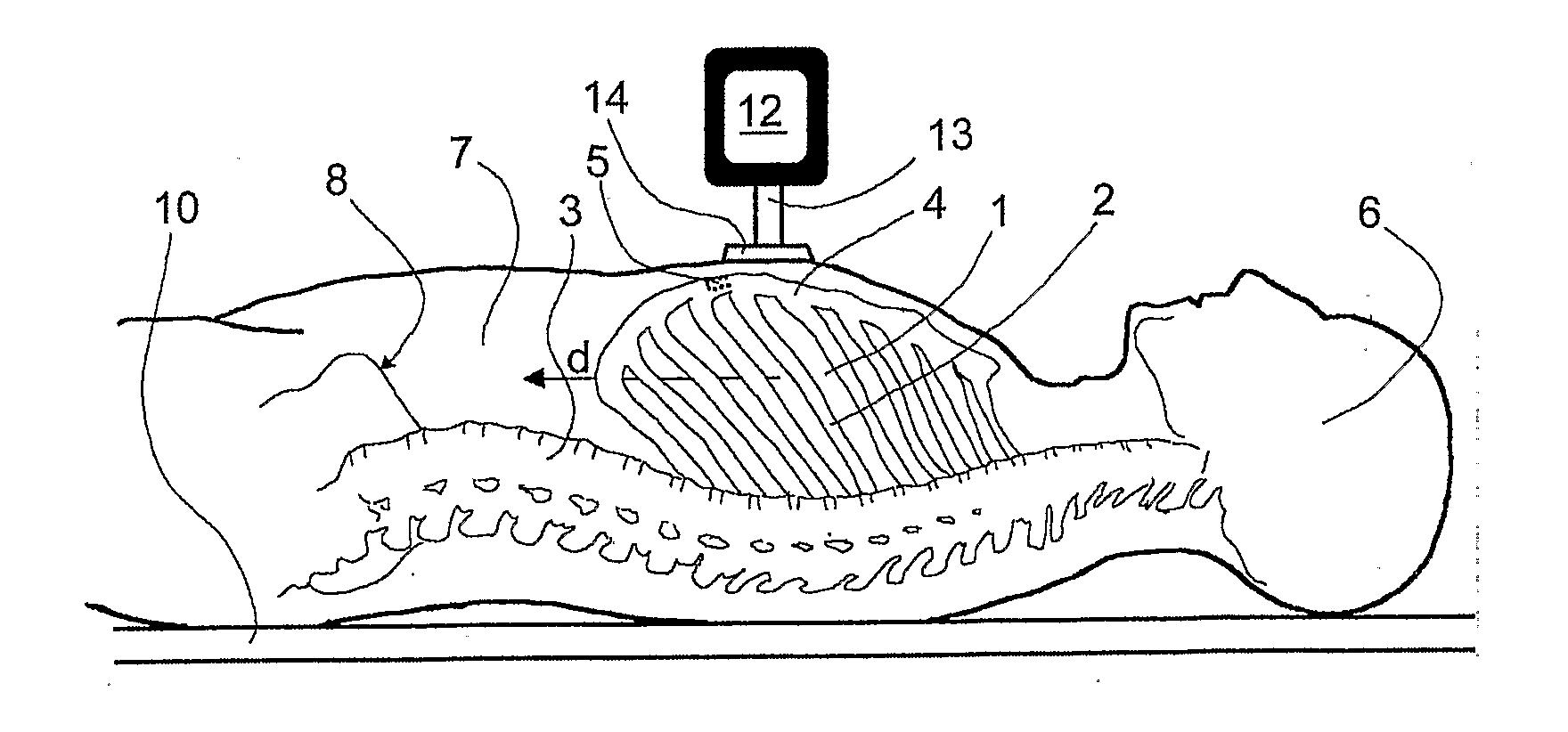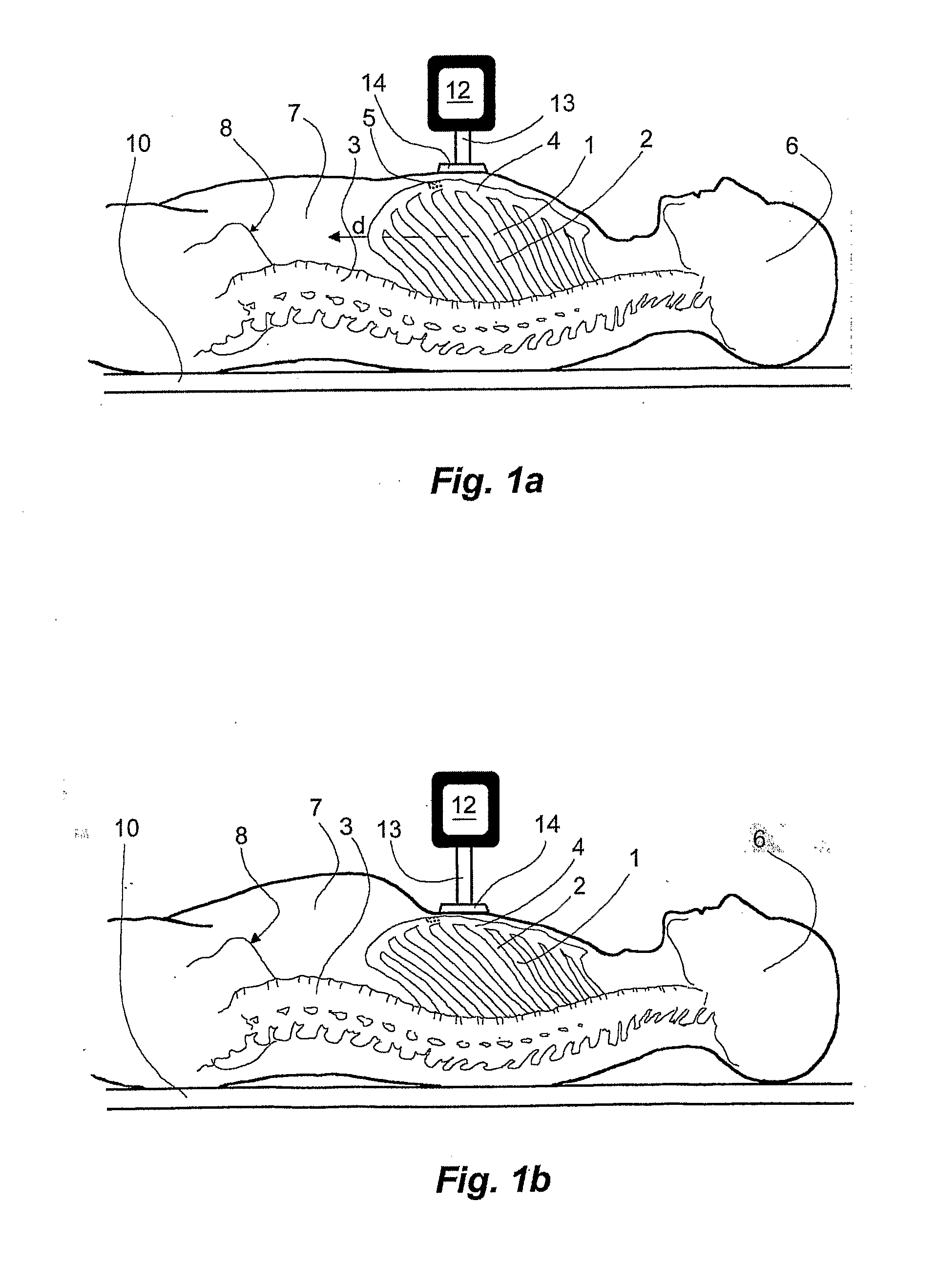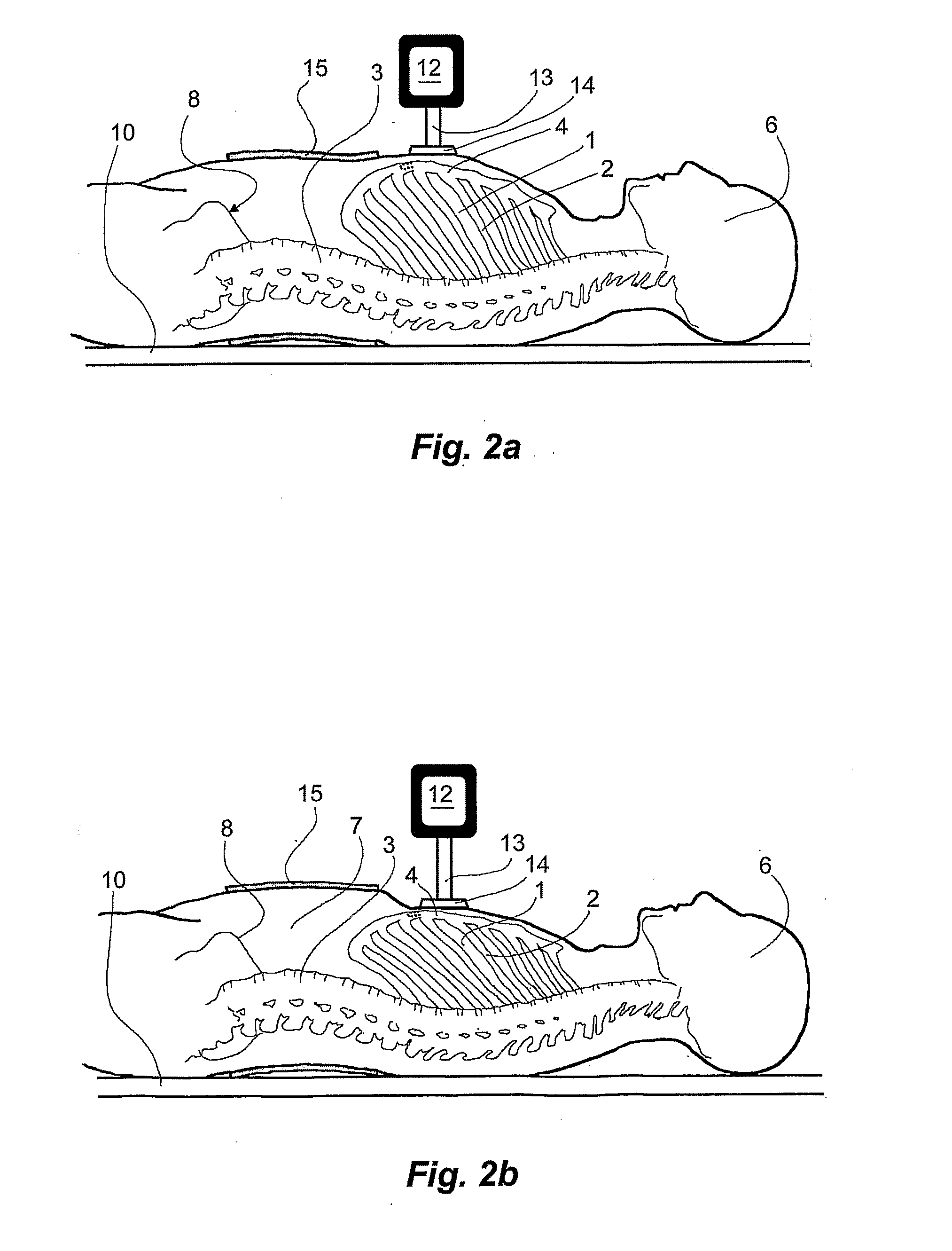method and a device for abdominally stabilizing patient
a technology for stabilizing devices and patients, applied in the field of abdominal support, can solve problems such as the loss of considerable compression effort, and achieve the effect of not increasing the risk of damage to the thoracic cag
- Summary
- Abstract
- Description
- Claims
- Application Information
AI Technical Summary
Benefits of technology
Problems solved by technology
Method used
Image
Examples
embodiment 120
[0035]FIGS. 3a, 3b, in which reference numbers 124, 125, 126 designate the abdominal cavity, the spine and the abdominal wall, respectively, illustrate a first preferred embodiment 120 of the abdominal support belt of the invention. Reference number 130 refers to the projection of the umbilicus perpendicular to the drawing plane while reference number 129 refers to the spinal channel. The support belt 120 comprises a rectangular sheet 121 of woven nylon thermally stabilized at its edges against tearing. The sheet 121 has an inside facing the patient's belly when applied and an outside facing away from the belly. Over a section extending from one short end of the sheet 121 a Velcro™ pad 122 is affixed to the outer face of the sheet 121 by sewing. Near the other short end of the sheet 121 another Velcro™ pad 123 is similarly affixed to the inner face of the sheet 121. The abdominal support belt 120 is so dimensioned that it can be wrapped around the belly of an obese adult person, for...
embodiment 220
[0036]FIGS. 4a-4c, in which reference number 224 designates the abdominal cavity, reference number 225 the spine and reference number 226 the abdominal wall, illustrate a second preferred embodiment 220 of the abdominal support belt of the invention. The support belt 220 comprises a rectangular sheet 221 of strong cotton fabric. The sheet 221 has an inside facing the patient's belly when applied and an outside facing away from the belly.
[0037]The inside of the sheet 221 is covered with a latex based adhesive covered by a protective sheet 223 of silanized kraft paper. The protective sheet 223 is torn off prior to use. The abdominal support belt 220 is so dimensioned that it can be wrapped around the belly of an obese adult person, allowing for a sufficient overlap, for instance comprising a sheet 221 length of 150 cm. The belt 220 is locked in this position by adhering to the patient's skin. The length of the sheet 221 portion 221′ covered by adhesive should be selected so as to allo...
embodiment 320
[0038]FIGS. 5a, 5b, in which reference numbers 324, 325, 326 designate the abdominal cavity, the spine and the abdominal wall, respectively, illustrate a third preferred embodiment 320 of the abdominal support belt of the invention. The support belt 320 comprises a rectangular sheet 321 of polyethylene fabric thermally stabilized at its edges against tearing. At one short end of the sheet 321 is affixed a friction belt buckle 322 by wrapping a sheet portion extending from that end around the central cross bar of the buckle 322 and joining the end portion to the main portion by stitched seams 323, 323′. The support belt 320 is locked by inserting the other short end of the sheet 321 into the belt buckle 322 then pulling tight. The abdominal support belt 320 is so dimensioned that it can be wrapped around the belly of an obese adult person, for instance comprising a sheet 321 length of 150 cm or 160 cm, allowing for a sufficient overlap, and locked in this position. The support belt 3...
PUM
 Login to View More
Login to View More Abstract
Description
Claims
Application Information
 Login to View More
Login to View More - R&D
- Intellectual Property
- Life Sciences
- Materials
- Tech Scout
- Unparalleled Data Quality
- Higher Quality Content
- 60% Fewer Hallucinations
Browse by: Latest US Patents, China's latest patents, Technical Efficacy Thesaurus, Application Domain, Technology Topic, Popular Technical Reports.
© 2025 PatSnap. All rights reserved.Legal|Privacy policy|Modern Slavery Act Transparency Statement|Sitemap|About US| Contact US: help@patsnap.com



